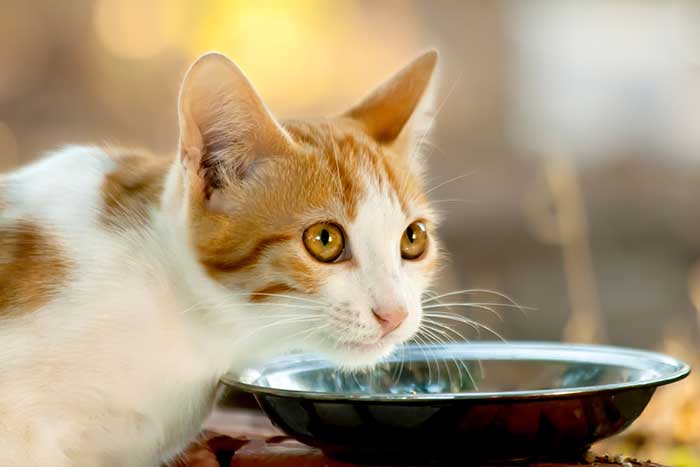Cats will eat anything that looks or feels like food. That includes lentils. So, don’t be surprised if you ever found your feline friend savoring the last bits of lentils that you left on the dinner table.
But as a loving and responsible pet parent, you should always be wary of anything that goes down your cat’s stomach. That’s especially if the food in question is not an animal product.
As you shall find, a cat’s dietary needs are different from ours. So, can cats eat lentils?
The simple answer is yes, cats can eat lentils. But they probably shouldn’t. While your cat may not drop dead after snacking on a few portions of lentils, consuming too much lentils might trigger a host of gastrointestinal issues like vomiting and diarrhea. Also, lentils don’t provide cats with much of their dietary requirements.
So, can I give my cat lentils?
Yes, you can definitely give your cat lentils. But it would probably be better to consider other options. If you must feed lentils to your kitto, only do so occasionally. Lentils should never replace your cat’s staple food.
Most importantly, always feed lentils to your cat in moderation. That’s the only way to avoid some of the common side effects associated with plant-based foods to cats.
Table of Contents
More About Lentils
It’s not unusual for a cat owner to be wondering, are lentils safe for cats? Before we delve into the potential benefits and risks of lentils for cats, let’ begin easy by understanding just what lentils are.
Lentils are special types of grains that come from a plant in the legume family. The plant is scientifically known as Lens culinaris.
At first glance, lentils may look like regular beans. But the two grains are quite different from each other, both in physical appearance and dietary profile.
Lentils also come in a variety of colors and sizes. There are at least 12 distinct varieties of lentils. The most common ones include;
i. Brown Lentils
Brown lentils have an earthy flavor and retain their shape well after cooking. They’re excellent in stews.

ii. Puy Lentils
Puy lentils derive their name from the region they’re mostly cultivated – Le Puy in France. These lentils are smaller than green lentils and have a peppery taste.
iii. Green Lentils
As the name suggests, green lentils are green in color. They’re widely considered as the more affordable option to Puy lentils.
iv. Beluga Lentils
Beluga lentils are tiny, black, and resemble caviar. They’re commonly used as a base for warm salads.
v. Yellow and Red Lentils
Yellow and red lentils come with a sweet and nutty flavor. They’re easier to cook and are excellent for making dal.
According to archaeological evidence, humans have been eating lentils for well over 10,000 years. These grains continue to grow in popularity, and understandably so.
Many nutritionists consider lentils as superfoods. The cereals contain numerous nutritional benefits for humans.
Not only are lentils low in fat, but they’re also high in fiber and protein. Lentils are also a rich source of various essential nutrients, including folate, pantothenic acid, thiamin, vitamin B6, iron, phosphorus, and zinc.

In terms of nutritional profile, one cup of lentils (or about 198 grams) of cooked lentils provide the following nutritional benefits;
- 230 calories
- 39.9 grams of carbs
- 17.9 grams of protein
- 15.6 grams of fiber
- 0.8 grams of fat
- 90% of the recommended daily intake (RDI) of folate
- 49% of the RDI of manganese
- 37% of the RDI of iron
- 36% of the RDI of phosphorous
- 25% of the RDI of copper
- 22% of the RDI of thiamin
- 21% of the RDI of potassium
- 18% of the RDI of magnesium
- 18% of the RDI of vitamin B6
- 17% of the RDI of zinc
- 13% of the RDI of pantothenic acid
- 10% of the RDI of niacin
Based on the above nutritional profile, it’s clear to see why lentils are considered superfoods. However, note that lentils are only superfoods as far as their benefits to humans are concerned. When it comes to cats, lentils only offer minimal dietary benefits.
- One (1) 14 lb. Bag - Purina Pro Plan High Protein Cat Food With Probiotics for Cats, Shredded Blend Chicken and Rice Formula
- High protein formula, with real chicken as the first ingredient. Fortified with guaranteed live probiotics to support digestive...
- Crunchy kibble and meaty, shredded pieces for a delicious mealtime experience. Used to be known as SAVOR Shredded Blend Chicken...
Last update on 2024-07-12 / Affiliate links / Images from Amazon Product Advertising API
Potential Benefits of Lentils for Cats
As we’ve seen from the above nutritional profile, lentils are incredibly high in protein. In fact, lentils contain the highest amount of protein among all the vegetable foods available for human consumption. That makes them a possible recommendation for cats too.
High-protein diets are essential for all animals. Proteins form the building blocks of cells, tissues, organs, and muscles.
Protein is also famous for its appetite-suppressing abilities. That’s because protein-rich foods create a sense of fullness for longer. Therefore, feeding lentils to your cat is a great way to monitor the foods the animal consumes as a way of keeping his weight in check.
Evidently, lentils can serve as an excellent substitute for animal protein. However, that’s not to mean that the grains should replace your cat’s need for animal protein altogether.
Besides proteins, lentils are also high in dietary fiber. Although cats can mostly do without fiber, fiber-rich foods may still offer a number of benefits to them.

Most notably, fiber (especially insoluble fiber) aids digestion by adding bulk to a cat’s stool, thereby allowing him to empty his bowels more frequently. So, supplementing your cat’s diet with lentils might help to relieve digestive issues like constipation.
Fiber also works synergistically with protein to create a sensation of fullness for longer. Plus, fiber-rich foods can nourish your cat’s gut-friendly bacteria.
Last but not least, lentils are rich in polyphenols, such as procyanidin and flavanols. Polyphenols have powerful antioxidant properties and can lower the risks of various chronic diseases like heart disease, feline arthritis, and certain cancers.
Other notable minerals in lentils that cats can benefit from include vitamin B3, folate, iron, manganese, and phosphorus.
Considering the above-highlighted potential benefits of lentils for cats, you could now be wondering, are lentils ok for cats? Well, the next section might offer more insights into that.
- Real turkey is the number 1 ingredient in this Purina indoor cat food to help provide the protein she needs for strong muscles,...
- High protein cat food kibble with 10 percent less fat than Purina ONE Tender Selects Blend With Real Chicken helps her maintain a...
- A SmartBlend of fiber-rich nutrition in weight control dry cat food helps minimize hairballs, and four antioxidant sources support...
Last update on 2024-07-12 / Affiliate links / Images from Amazon Product Advertising API
Potential Risks of Lentils for Cats
Although lentils boast a rich dietary profile, many of the minerals in lentils may not benefit your cat. That’s because cats have different dietary needs than humans.
While humans are omnivores and can safely consume plant-based foods like lentils, cats are obligate carnivores. Cats can derive all their nutritional elements exclusively from animal protein. Well, that shouldn’t prevent you from supplementing your cat’s diet with lentils. It simply means that your feline friend won’t benefit from the minerals in lentils the same way you would.
Also, lentils are quite high in fiber. Small amounts of fiber might aid your cat’s digestion. But the fiber content in lentils may be a bit high for your cat’s stomach to handle. High amounts of fiber might produce a laxative effect, causing diarrhea and related complications like dehydration and abdominal pain.
Lentils also contain worrying levels of carbohydrates. Just like fiber, carbohydrates are not essential nutrients for cats. In fact, a cat’s body secretes low amounts of the enzymes that break down carbohydrates, such as intestinal disaccharidases and pancreatic amylase. So, high-carbohydrate diets like lentils might increase your cat’s risks of metabolic disorders, such as obesity and diabetes.

Lastly, lentils contain trypsin inhibitors and phytates. These compounds act as anti-nutrient factors. Trypsin inhibitors reduce a cat’s ability to digest protein, whereas phytates block the absorption of certain dietary elements.
So, can I feed lentils to my cat or are lentils poisonous to cats?
Having gone through the potential benefits and risks of lentils for cats, we still maintain that cats should only eat lentils in moderation.
Best Way to Prepare and Feed Lentils to Cats
As a cat owner considering feeding lentils to your kitto, you could be wondering, can cats eat raw lentils? And what of cooked lentils, can cats eat cooked lentils?
Now, there are numerous ways to prepare lentils for human consumption. However, there’s just one procedure when it comes to preparing lentils for cats.

First, it’s recommended to soak the lentils overnight. This helps to denature the anti-nutrients in these grains, such as phytates and trypsin inhibitors.
After soaking, boil the lentils slowly over medium heat until they become soft. This way, the animal will have an easier time digesting the grains. However, avoid overcooking the lentils as you may end up destroying many of the essential minerals in them.
Most importantly, boil the grains in plain water. Do not add salt, spices, or seasoning. While salt and spices are excellent flavor enhancers for humans, they could be disastrous for cats.
When your lentils are ready, you can serve them to your kitto as a standalone food or mix them into other foods like rice.
So, you might have been wondering, can cats eat lentil and rice?
Well, you’ve got your answer right there.
What of lentil soup, can cats eat lentil soup?
A little lentil soup may be okay for your cat. But high amounts of lentil soup could induce diarrhea.

Does The Type And Part Of Lentil Matter?
Although the various types of lentils differ slightly in terms of their dietary profiles, they all tend to have the same safety profile.
So, can cats eat green lentils? And what of red lentils, can cats have red lentils?
The answer to both questions is yes. Both red and green lentils contain numerous minerals that your cat may benefit from. But as with all types of lentils, you should only feed green or red lentils to your kitto in moderation.
You could also be wondering, can cats eat lentil sprouts?
Lentil sprouts are basically the shoots of lentil plants. Cats can eat small amounts of cooked lentil sprouts. It’s not recommended to feed raw lentil sprouts to cats.
Lastly, can kittens eat lentils?
Kittens have lower immunity and more sensitive stomachs compared to adult cats. Therefore, feeding lentils to kittens may not be a great idea.
Conclusion: So, are lentils bad for cats?
Lentils are not immediately harmful to cats. These grains contain certain nutrients that cats can benefit from.
However, remember to feed lentils to your cat only in moderation. High amounts of lentils might trigger severe gastrointestinal issues for your kitto, including vomiting and diarrhea. Plus, your cat may not benefit from lentils the same way humans would.
Fortunately, there are numerous healthier plant-based alternatives to lentils which you might consider, including carrots and blueberries.
Checkout Our Favorite Cat Products
1. Best Online Course For Cat Parents
Our favorite: The Cat Language Bible (How to Finally Understand And Speak to Your Cat) – A new form of cat to human communication that many cat owners have dreamed about… but few have actually thought possible.
2. Best Immune Support For Cats
Our favorite: Tomlyn Immune Support – Best Supplement for Cats and Kittens.
3. Best Cat Treats
Our favorites: LIFE ESSENTIALS All Natural Freeze Dried Chicken And Sheba Meaty Tender Sticks – Both are Great.







